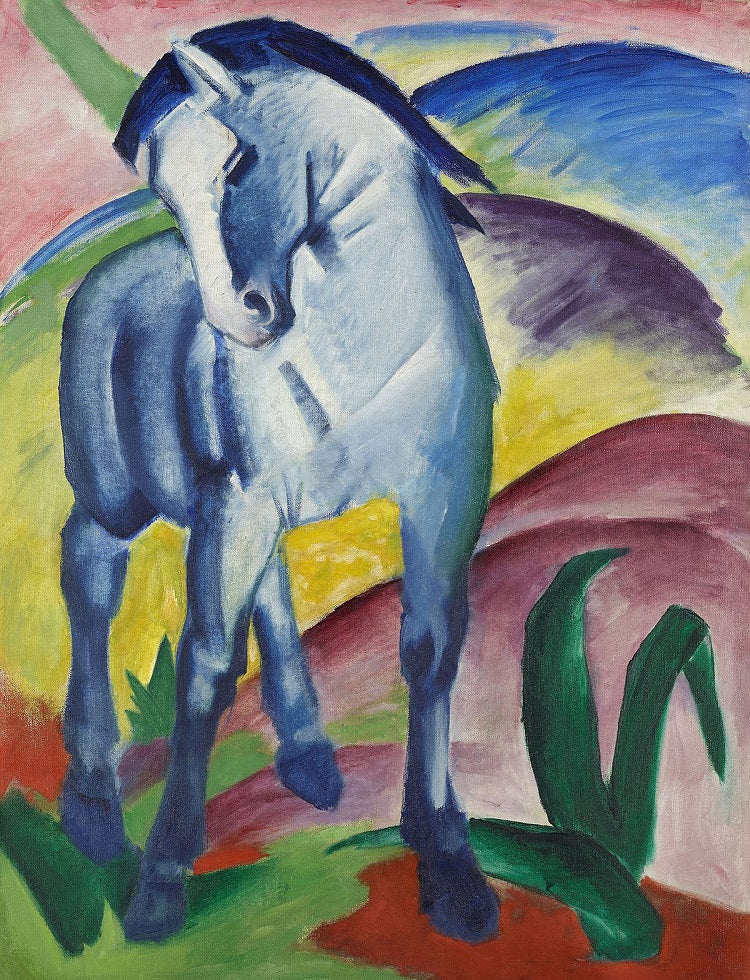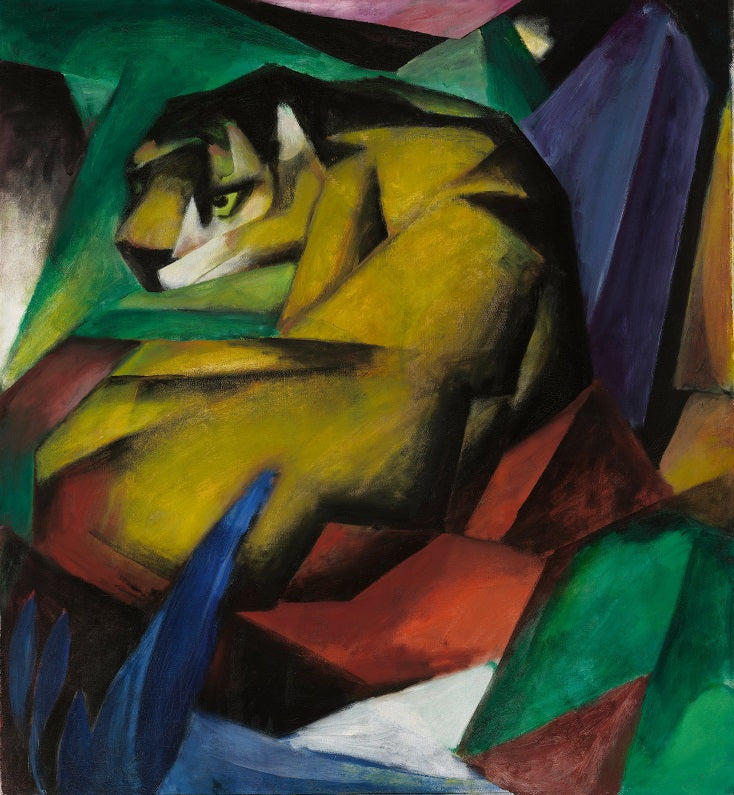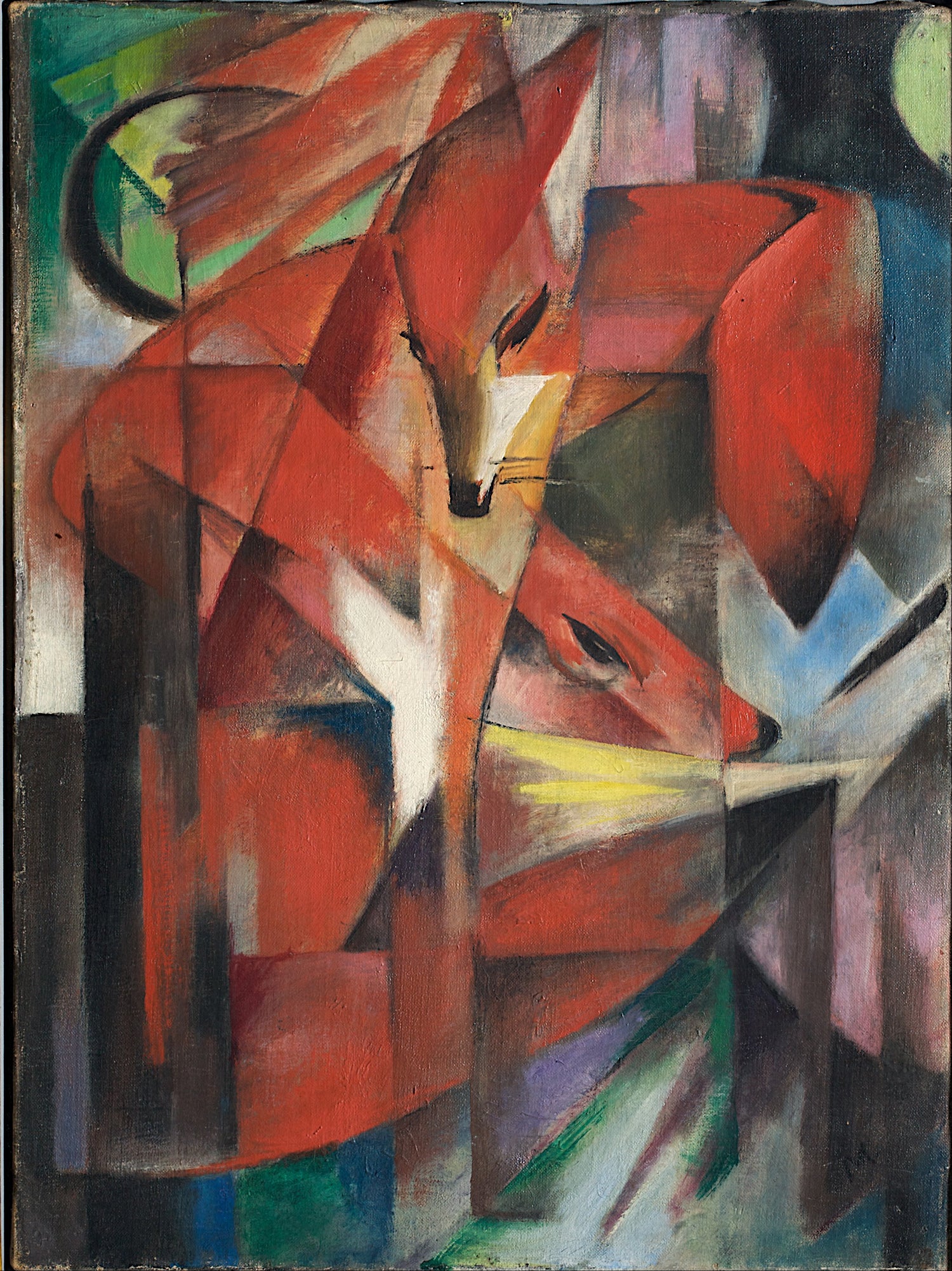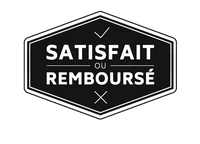Franz Marc was an influential German Expressionist artist, widely respected for his emotional and tender paintings and portraits of animals. He was a co-founder of the Der Blaue Reiter (Blue Rider) school of painting, which emphasised the emotionally charged colours and distorted pictorial forms that would inspire the Expressionist movement. In addition to his reputation for landscapes, Marc's most recognisable work is the animal themes he painted with great energy expressed in vibrant colours. His works establish a strong emotional connection with the viewer by combining both subtle details and abstract forms that capture the spirituality, life force and mystery of nature and its creatures.
To create this emotional impact, Marc experimented with innovative techniques such as painting animals in unnatural colour combinations and using unexpected shapes to represent them. His legacy will remain deeply rooted in modern art, as his works were among the first to combine emotion with natural elements in such an expressive way.
Blue Horse I

Blue Horse I by Franz Marc is a striking painting from the early 20th century. This expressionist painting depicts a bright blue horse standing in an apparently peaceful outdoor setting. The reflection of the sun on the animal's coat gives an almost supernatural glow that enhances the overall beauty of the work. Marc's use of colour and brushstrokes adds an extra dynamic layer to this surreal scene, which is both captivating and moving. Blue Horse I is an enduring symbol of nature's grace and the power to evoke emotions through art, making it one of Franz Marc's most important works.
Marc has created this hovering effect by using mutually contrasting colours, such as blue for the hooves and red for the ground. It is also noticeable that while two of the horse's hooves appear to be levitating, the other two appear to be firmly attached to the green ground. This is perhaps an attempt to show a transition from reality to spirituality. The blue shading of the horse makes its skin look young and healthy. The muscular contours and healthy skin evoke the vitality, masculinity and energy of the animal. The blue horse is depicted in a light that portrays it as a strange creature, which reinforces its spiritual purity.
Date of the work : 1911
Original dimensions : 112 cm × 84.5 cm
Place of conservation : Städtische Galerie im Lenbachhaus, Munich, Germany
Stables

Horses have been one of Franz Marc's favourite subjects for many years, as he seeks to use the power of nature to represent emotional and spiritual feelings in his paintings. In doing so, he was influenced by early abstract painters such as Vassily Kandinsky. When he painted Stables, he had come to the conclusion that abstract forms would allow him to connect the horses in the painting to nature as a whole, and even to the totality of existence. Whereas in his earlier paintings of horses, the artist had often seen these animals as individuals.
By envisaging the scene as a unified whole, Marc mixes the horses themselves and their stable to such an extent that there is hardly any distinction between the two. The colours used - red, white and blue - nevertheless contrast quite strongly with the background. In 1913, the expressionism with which Marc had made his name was increasingly influenced by artists such as Robert Delaunay, as well as by the emerging futurist movement.
Date of the work : 1913
Original dimensions : 74 x 158 cm
Place of conservation : Solomon R. Guggenheim Museum, New York City, NY, USA
Dog lying in the snow

Franz Marc's Dog Lying in the Snow is a breathtaking depiction of canine and environmental serenity. Painted in bright pastel colours, the work depicts a white-coated, four-legged companion nestled in a bed of crystallised precipitation, gazing longingly at something beyond the frame of the image. Its head and tail are neatly perched on rocks, giving us an idea of where it is: perhaps a quiet meadow deep in the countryside. Not much else is visible in the painting, which rather encourages us to focus our attention not only on the dog, but also on his peaceful surroundings. Marc's exceptional talent as a painter is undeniable; we can almost feel the bracing mountain air and the coldness of it as we observe this beautiful pastoral scene.
Date of the work : 1911
Original dimensions : 62,5 x 105 cm
Place of conservation : Musée Städel, Frankfurt, Germany
The Tiger

Franz Marc's painting The Tiger is an iconic piece of modern art, well known for its striking palette of vivid colours. This cubist-inspired painting depicts a white tiger against a vibrant background of pink, yellow and blue. A bewitching swirl of flowers adorns the bottom of the canvas, adding to its magical appeal. The Tiger illustrates Marc's unique ability to juxtapose nature and colour in unexpected ways. Captivating and inspiring, it remains one of his most famous works and has been widely exhibited since its creation.
Date of the work : 1912
Original dimensions : 102 x 112 cm
Place of conservation : Lenbachhaus, Munich, Germany
Foxes

Franz Marc's painting Foxes depicts a colourful group of foxes in what appears to be an open-air meadow. A range of hues gives the painting its unique charm, with orange and blue dominating the palette. The style is Fauvism, which is characterised by strong and often contrasting colours used to convey emotion. This technique has been used to great effect here, as one can feel the joyful energy emanating from the canvas of the painting. As foxes are known for their cunning behaviour, their innocent expressions surely carry a hint of mischief. Despite this playful backdrop, an underlying tension is present throughout the work, making it even more complex. On closer inspection, elements of Cubism can be seen in the background figures and shrubs - evidence of Marc's characteristic Cubo-expressionist style. Overall, this vibrant expressionnist backdrop provides a beautiful setting for Franz Marc's Foxes.
Date of the work : 1913
Original dimensions : 88 cm × 66 cm
Place of conservation : Private collection



